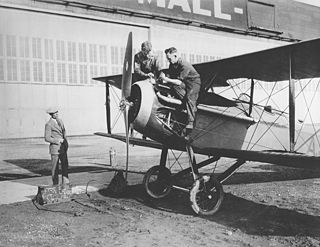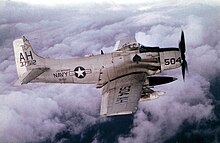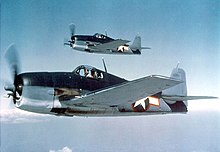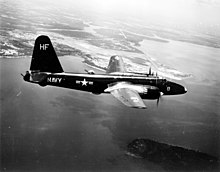Multiple designation systems have been used to specify United States military aircraft. The first system was introduced in 1911 by the United States Navy, but was discontinued six years later; the first system similar to that used today was designed in 1919 when the US Army's Aeronautical Division became the United States Army Air Service. Before this, aircraft were put into service under their manufacturers' designations.

The Naval Aircraft Factory (NAF) was established by the United States Navy in 1918 in Philadelphia, Pennsylvania. It was created to help solve aircraft supply issues which the Navy Department faced upon the entry of the U.S. into World War I. The United States Army’s requirements for an enormous quantity of airplanes created a decided lack of interest among aircraft manufacturers in the Navy's requirements for a comparatively small quantity of aircraft. The Navy Department concluded that it was necessary to build a Navy-owned aircraft factory in order to assure a part of its aircraft supply; to obtain cost data for the department’s guidance in its dealings with private manufacturers; and to have under its own control a factory capable of producing experimental designs.

Vought was the name of several related American aerospace firms. These have included, in the past, Lewis and Vought Corporation, Chance Vought, Vought-Sikorsky, LTV Aerospace, Vought Aircraft Companies, and Vought Aircraft Industries.

The National Naval Aviation Museum, formerly known as the National Museum of Naval Aviation and the Naval Aviation Museum, is a military and aerospace museum located at Naval Air Station Pensacola, Florida.

Patriots Point Naval & Maritime Museum is a naval museum located in Mount Pleasant, South Carolina, at the mouth of the Cooper River on the Charleston Harbor, across from Charleston.

The New England Air Museum (NEAM) is an American aerospace museum located adjacent to Bradley International Airport in Windsor Locks, Connecticut. The museum consists of three display hangars with additional storage and restoration hangars. Its collections include aircraft ranging from early flying machines to supersonic jets, as well as engines, and other pieces of flight-related equipment. Significant aircraft include

The Yanks Air Museum is an aviation museum dedicated to exhibiting, preserving and restoring American aircraft and artifacts in order to show the evolution of American aviation, located at Chino Airport in Chino, California.
From 1922 until 1962, the United States Navy, the United States Marine Corps and the United States Coast Guard used a system to designate their aircraft that included information about a craft's role and its manufacturer. For a listing of all such designations, see the list of United States Navy aircraft designations (pre-1962).

The Vought XSB3U was an American biplane scout bomber developed by Vought-Sikorsky for the United States Navy during the 1930s. Developed as an alternative to the SB2U Vindicator monoplane, the aircraft proved unsatisfactory to the Navy in comparison, and development was not pursued.

The North American FJ-1 Fury is an early turbojet-powered carrier-capable fighter aircraft used by the United States Navy (USN). Developed by North American Aviation (NAA) starting in 1945, it became the first jet aircraft in USN service to serve at sea under operational conditions. This first version of the FJ was a straight-winged jet, briefly operational during the transition to more successful designs. An evolution of the FJ-1 would become the land-based XP-86 prototype of the United States Air Force's enormously influential F-86 Sabre, which in turn formed the basis for the Navy's carrier-based, swept-winged North American FJ-2/-3 Fury.
The Wings of Freedom Aviation Museum in Horsham, Pennsylvania is a museum dedicated to preserving the aviation history of the Greater Delaware Valley including NAS Willow Grove and Harold F. Pitcairn. It is owned and operated by the Delaware Valley Historical Aircraft Association (DVHAA), a non-profit organization. Opened in 2004, the museum features restored historic aircraft, flight helmets, flight gear, air to air missiles, Martin-Baker ejection seats, and military service medals.

Naval Air Station Grosse Ile was a Naval air station located on the southern tip of Grosse Ile, Michigan. It operated from 1927 until late 1969, and is now a township airport. During World War II NASGI was one of the largest primary flight training stations for Naval aviators, and RAF pilots. Among the many thousands of Navy pilots who began their careers at NASGI is game show host Bob Barker. Former President George H. W. Bush finished his active Navy career at NASGI attached to Torpedo Squadron 153(VT-153).

The Vought XSO2U was an American observation floatplane developed by Vought-Sikorsky for the United States Navy during the late 1930s. Intended to replace the Curtiss SOC Seagull in service as a scout aboard cruisers, it proved superior to the Curtiss SO3C in evaluation, but failed to win a production contract due to Vought's lack of manufacturing capacity.

Naval Aircraft Factory NO was an American short-range reconnaissance/gun spotting aircraft of the 1920s. A single-engined three-seat biplane with alternative floats or wheels, six were built for the U.S. Navy.






























